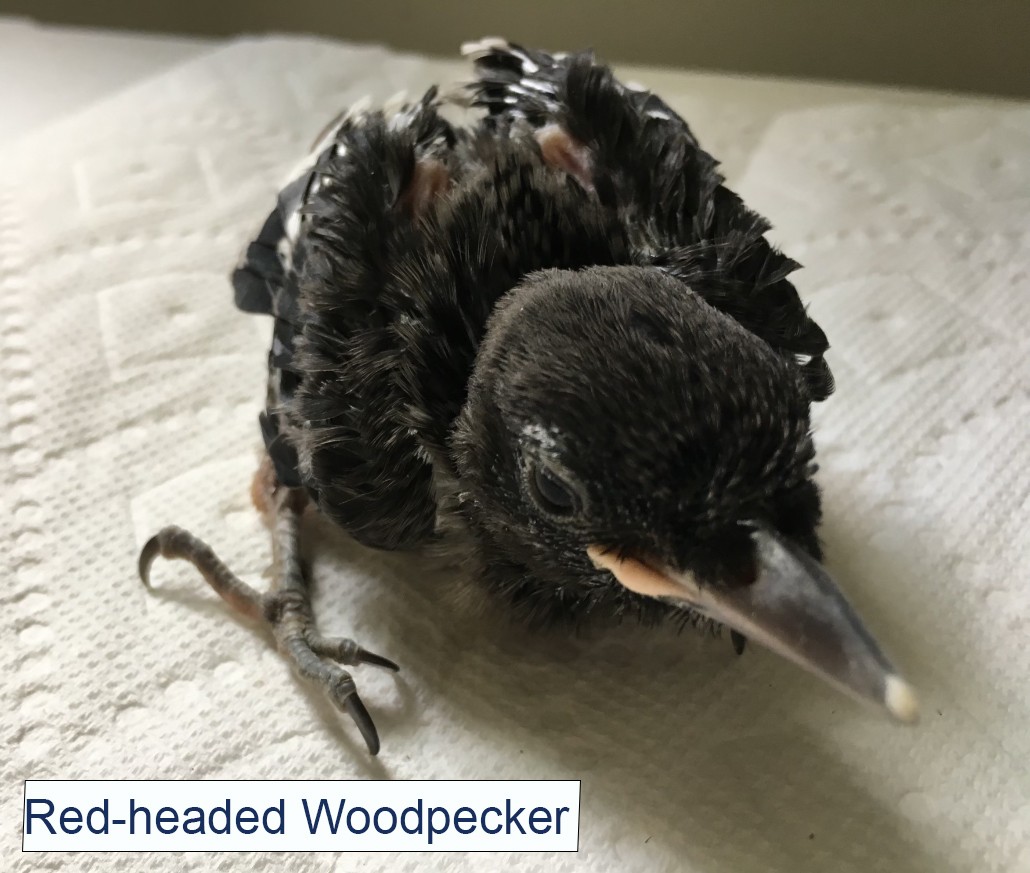Red-headed Woodpecker
Melanerpes erythrocephalusThe Red-headed Woodpecker is a dramatically patterned bird. At rest and in flight its bright red head contrasts with its bold black and white wings. In addition to eating nuts and berries, this woodpecker is an expert at catching flying insects and is one of the few woodpeckers that will cache (store) food for the winter months.
It breeds from south-central Canada across the eastern United States and withdraws to the southern portion of its range in the non-breeding season. The number of individuals wintering in an area varies greatly from year to year and may depend on food availability. The Red-headed Woodpecker is a year-round resident in Tennessee and is most common in the western portion of the state, especially in winter.
Description: This medium-sized woodpecker is the only woodpecker with a completely red head. That red head and its black wings with large white panels make it an easy species to identify at rest or in flight.
The chest and rump are white, while the tail is black with white outer feathers. The male and female are identical in appearance. The juvenile (July-February) has a similar pattern to the adults, but the head is brown at first, gradually becoming red during the winter.
Length: 9.25"
Wingspan: 17"
Weight: 2.5 oz
Voice: The call is a slightly trilled churr churr churr, and a husky chatter. It also has a bold queerpnote, that is less vibrant than a Red-bellied Woodpecker.
Similar Species:
- Red-bellied Woodpeckers only have red on the back of the head and have a back that is barred with black and white.
Habitat: Breeds in open deciduous woodlands, river bottoms, groves of dead and dying trees, orchards, parks, and open wooded swamps with dead trees and stumps. Attracted to burns and recent clearings. Winters in the mature bottomland hardwood forest and upland forest, especially those with oaks.
Diet: This is a most omnivorous woodpecker eating beech and oak mast, seeds, berries, fruit, insects, bird eggs, nestlings, and mice. Regularly caches food in winter for later consumption.
Nesting and reproduction: Red-headed Woodpeckers start nesting in late April or early May, which is later than other Tennessee woodpeckers. They may have two broods in a season.
Clutch Size: Usually 4 to 5 eggs. Range: 3 to 7
Incubation: Both the male and female incubate the eggs for 12 to 13 days.
Fledging: The young leave the nest at 27 to 30 days.
Nest: Nests in holes in dead trees or in dead branches, preferring snags with little bark remaining. Red-headed Woodpeckers will occupy an existing cavity or dig a new one. It may take as little as 2 or 3 days to excavate a new cavity.
Status in Tennessee: Common to locally abundant year-round in West Tennessee and less common in the rest of the state. More northerly nesters join resident birds in winter. The Red-headed Woodpecker is declining in Tennessee, as it is over much of its breeding range, and competition with European Starlings for nest cavities may be partly responsible.
Fun Facts:
- The Red-headed Woodpecker stores food to be eaten later. It hides insects and seeds in cracks in wood, under bark, and in fence posts, hammering acorns into crevices so tightly that other animals (especially Blue Jays) cannot remove them.
- This woodpecker was a war symbol of the Cherokee Indians, and its head was used as a battle ornament, particularly by Plains tribes.
- The oldest reported Red-headed Woodpecker in the wild was 9 years 11 months old.
Best places to see in Tennessee: Populations of this woodpecker are scattered and somewhat unpredictable.

